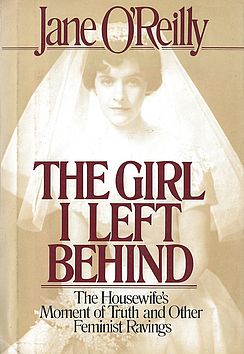Resource Library
Film Clips: Workplace and Family
How did activist Dolores Huerta grapple with the dual roles of motherhood and total commitment to social justice and political change?
Excerpt from “A Crushing Love: Chicanas, Motherhood and Activism,” a film by Sylvia Morales. (Running time 4:37) Used with permission. The complete film is available from Women Make Movies.
Why did Dorothy Haener become a labor activist after World War II, when women were a minority in labor unions?
Excerpt from “Step by Step: Building a Feminist Movement 1941-1977,” a film by Joyce Follet. (Running time 4:33) Used with permission. The complete film is available from Women Make Movies.
Meet the tradeswomen in Maine who helped build Liberty Ships during World War II.
Video, “On the Job: Women Launching a New Tradition,” by Spring Point Media Center at Southern Maine Technical College. (Running time 27:06) Creative Commons license. The video is available from the Maine Community TV Archives, courtesy of Internet Archive.
In the 1970s, “white-collar” office workers organized their own union, 9to5, while activists like Mercedes Tompkins supported women moving into “blue-collar” trades.
Excerpt from “A Moment in Her Story: Stories from the Boston Women's Movement,” a film by Catherine Russo. (Running time 1:49) Used with permission. The complete film is available from Catherine Russo Documentaries.
What lie does Gloria Steinem say ignited the conflagration between Anita Hill and Clarence Thomas?
Excerpt from “Sex and Justice,” a film by Julian Schlossberg and Seymour Wishman. (Running time 4:55) Used with permission. The complete film is available from Westchester Films, Inc.
What landmark 1976 jury trial, argued by attorney Allyn Ravitz, helped to define sexual harassment?
Excerpt from “Passing the Torch,” a film by Carol King. (Running time 3:11) Used with permission. The complete film is available from King Rose Archives. For more information, visit Veteran Feminists of America.
What was Beth Robinson’s argument before the Vermont Supreme Court that proved to be a powerful salvo for winning marriage equality?
Excerpt from “The State of Marriage,” a film by Jeff Kaufman. (Running time 4:15) Used with permission. The complete film is available from Floating World Pictures.
“I’m Hispanic. I’m female. I’m short.” Alfie Alvarado Ramos challenged long-standing prejudices to achieve her dream: a successful military career. Ramos is now: Director, Washington State Department of Veterans Affairs.
Excerpt from “Service: When Women Come Marching Home,” a film by Marcia Rock and Patricia Lee Stotter. (Running time 7:52) Used with permission. The complete film is available from Service The Film.
When will it end? At least 20% of female veterans have been sexually assaulted while serving.
Excerpt from “The Invisible War,” a film by Kirby Dick and Amy Ziering. (Running time 7:53) Used with permission. The complete film is available from Not Invisible.
What was Maria Cotera’s “epiphany moment” concerning Chicana activism, work and motherhood?
Excerpt from “A Crushing Love: Chicanas, Motherhood and Activism,” a film by Sylvia Morales. (Running time 3:55) Used with permission. The complete film is available from Women Make Movies.
What routinely asked question is at the heart of Governor Madeleine Kunin’s book The New Feminist Agenda?
Excerpt from “Madeleine May Kunin: Political Pioneer,” a film by Catherine E. C. Hughes. (Running time 4:14) Used with permission. Film clip edited by Catherine Hughes. The complete film is available from Vermont PBS. Photo courtesy of the Vermont State Archives and Records Administration.
How to Navigate our Interactive Timeline
You will find unique content in each chapter’s timeline.
Place the cursor over the timeline to scroll up and down within the timeline itself. If you place the cursor anywhere else on the page, you can scroll up and down in the whole page – but the timeline won’t scroll.
To see what’s in the timeline beyond the top or bottom of the window, use the white “dragger” located on the right edge of the timeline. (It looks like a small white disk with an up-arrow and a down-arrow attached to it.) If you click on the dragger, you can move the whole timeline up or down, so you can see more of it. If the dragger won’t move any further, then you’ve reached one end of the timeline.
Click on one of the timeline entries and it will display a short description of the subject. It may also include an image, a video, or a link to more information within our website or on another website.
Our timelines are also available in our Resource Library in non-interactive format.
Timeline Legend
Yellow bars mark entries that appear in every chapter
This icon indicates a book
This icon indicates a film
1971 The Click! Moment
The idea of the “Click! moment” was coined by Jane O’Reilly. “The women in the group looked at her, looked at each other, and ... click! A moment of truth. The shock of recognition. Instant sisterhood... Those clicks are coming faster and faster. They were nearly audible last summer, which was a very angry summer for American women. Not redneck-angry from screaming because we are so frustrated and unfulfilled-angry, but clicking-things-into-place-angry, because we have suddenly and shockingly perceived the basic disorder in what has been believed to be the natural order of things.” Article, “The Housewife's Moment of Truth,” published in the first issue of Ms. Magazine and in New York Magazine. Republished in The Girl I Left Behind, by Jane O'Reilly (Macmillan, 1980). Jane O'Reilly papers, Schlesinger Library.












